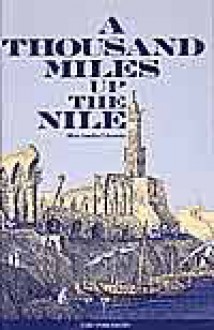
I thank the publisher for providing me an ARC copy of this book that I freely chose to review.
I had a ball reading this book. This is one of those books that are fun to read (even if you think you know where things are headed, you still want to read all the nitty-gritty details and end up discovering that things can go in unexpected directions), and are also great fun to tell others about. Because the plot of the book is both out-there and plausible at the same time, it’s impossible not to keep thinking about it, pondering over the details, and wondering how far things will go. And my bet is that anybody you tell about this book will also be left wondering and will want to know more.
The book’s description explains the main points of the plot in detail (too much detail for my liking, although luckily for me I didn’t remember the description when I got immersed in the book), so I won’t go over them again. This is a book suffused by art, painting in particular: love of art, the technique of painting, studying art, the obsession for art, collecting art, art museums and how they work, art as a business, but also and more importantly, the way art can communicate and affect people. The author, an artist in his own right, captures and transmits the way some art pieces can have an incredible effect on people, how we can feel moved, stirred, saddened, horrified, or utterly joyous by contemplating some artworks. The power of some images (or sounds, or movements…) is undeniable and, as the main protagonist of the story learns, does not reside on a perfect technique. Some paintings have a soul that reaches out, touches our hearts and, like here, even screams at us.
The story is narrated in the third person from the four main characters’ points of view. This does not cause confusion as each chapter is told from a single character’s perspective, and it is clearly signposted. Percival, the retired CEO who takes up painting, is the central character, the one whose actions set the story in motion, although he does that at the suggestion of Lucinda, whose role in the story seems to be that of observer/facilitator, but whose motives and actions are, perhaps, the most intriguing of the whole book. She was an actress and seems to have fallen into her role as a mixture of PA, housekeeper, and live-in help of Percival quite by accident. She has lost her self-confidence and is both restless but unable to act, having lost her sense of purpose. Percival is a quirky character, who seems to show traits of Asperger’s (he has difficulty dealing with people other than a few individuals who know him well, is obsessive and once he has focused on something, he finds it difficult to switch off, he is rigid and inflexible in his routines…), and has a peculiar, sometimes child-like, sense of humour. Towards the end of the book his mind goes into freefall, and he reminded me of the Howard Hughes’s character as portrayed in the film The Aviator, but here the focus is on painting and art. Red, the shadiest character, is perhaps the most easily recognisable and familiar of them all, but although not particularly likeable, his resourcefulness and the ease with which he accepts the most bizarre requests make him rise above the typical crooks of novels and films. My favourite character was Leonard, the museum security ward. Although he is not well-educated or sophisticated, he is an observer of people, loves art (for its own sake), and has a curious and clever mind. He is the amateur detective, the only one to make sense of what is going on and who pursues the answers, no matter how difficult it might be.
The author assembles a cast of characters that seem, at first, to be familiar types we’ve all read about or watched on movies, but we might not feel a particular connection to. (As I said, Leonard is perhaps the most “normal” of them all, and, at least for me, the easiest to empathise with). But as we read about them, we discover they all have something in common. They are lonely and disconnected from others. Percival and Lucinda live in the same house (although it is a huge mansion, the author manages to create a sense of claustrophobia and encroachment) but, as Lucinda eventually realises, they live in separate worlds. Red has chosen to live in the edges of society and doesn’t know how to relax or enjoy other people’s company, other than at a very basic/business-like level. And although Leonard has a regular job and some friends, he lives alone in his apartment, has been stuck in his job for years, and has no meaningful relationships to speak off. The “common” experience they go through teaches all of them something, not the same, but important lessons nonetheless.
The language is versatile, adapting well to each different character, with some very funny lines at times (Lucinda keeps collecting Percival’s pearls of wisdom, and some are laugh-out-loud funny), lyrical descriptions of paintings and experiences (some take on an almost hallucinatory quality), and accurate depictions of paranoid and disturbed mental states. The plot involves a variety of locations and settings, and some action scenes, without any real violence (although there is menace and veiled threats), and the narration moves at a good pace, with some reflective and contemplative moments, but never slowing down to a halt.
I also loved the end. As I have mentioned, all the characters learn something new about themselves, and the end of the central story (the robbery of The Scream) will bring a smile to readers’ faces. I hope somebody decides to make a movie out of it, because it would be a joy.
This is a book a bit difficult to categorise, as it has elements of the mystery novel (perhaps a cozy mystery with a difference), of the alternative historical fiction, even if it is real history (a reimagining of what might have truly happened when The Scream was stolen), of literary fiction, it’s also a study on obsession and art… I’d recommend it to people who love quirky stories with intriguing characters that do not fit into a given genre and are not followers of trends. If you love art, have a sense of humour, and are looking for something fresh and different, you must read this. I am very intrigued by the author’s biography and his other books, and I’ll be checking out the rest of his work.

 Log in with Facebook
Log in with Facebook 












